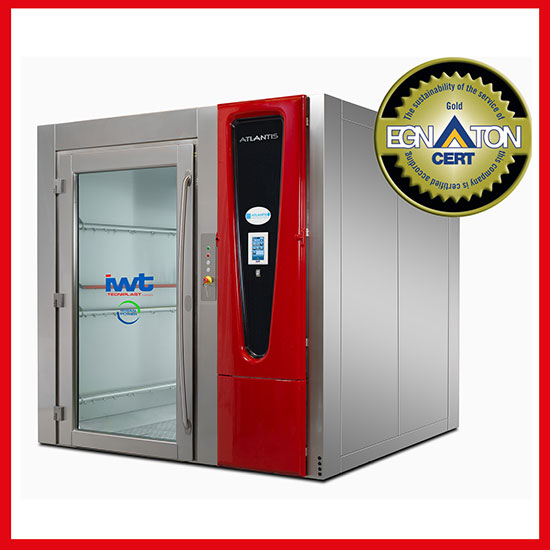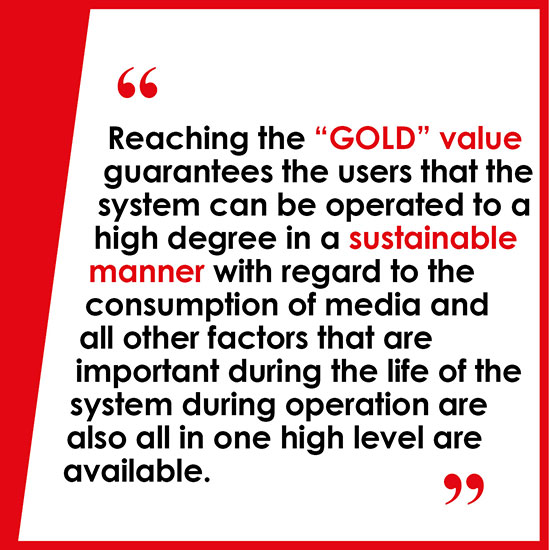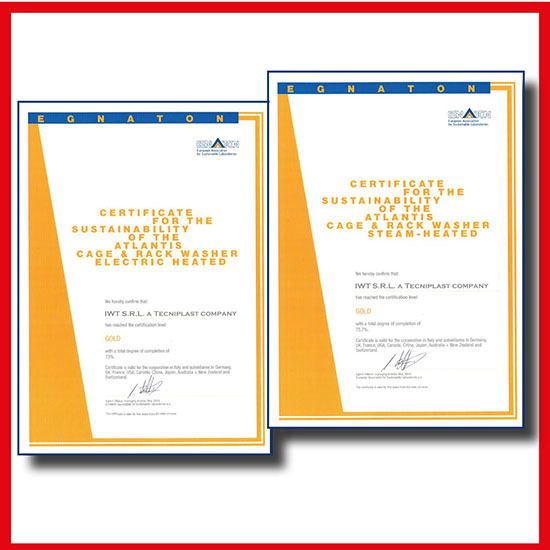
The current version of the Tecniplast website doesn't match your region. Please visit your local website to find information and offerings specific to your country.

The current version of the Tecniplast website doesn't match your region. Please visit your local website to find information and offerings specific to your country.

 Atlantis has been certified by EGNATON reaching the GOLD level, a prize which demonstrates the “green soul” of IWT’s products.
Atlantis has been certified by EGNATON reaching the GOLD level, a prize which demonstrates the “green soul” of IWT’s products.
In the construction and operation of modern research and laboratory buildings, as with similar construction projects in the industrial and public sectors, the focus is on the ecological footprint and sustainability.
While the ecological aspects are often in the foreground with key words such as "zero emissions", the factors of sustainability must be taken into account when looking at them in depth.
In order to define these factors and then be able to evaluate and apply them in practice, it is necessary to pool the specialist knowledge of all stakeholders. EGNATON e.V. – The European Society for Sustainable Laboratory Technologies has set itself the goal of preventing the politicization of the concept of sustainability in order to make "sustainability" sustainable. To do this, it is necessary to evaluate, promote and target sustainable laboratory technologies to develop.
EGNATON e.V. implements the three pillars of sustainability, operating cost reduction (economic efficiency), ecological safety and socio-cultural activity in the recommendations for action and the concepts for planners, suppliers, operators and users alike.
 In addition to the design of a new laboratory building, the devices operated in it have a significant impact on the sustainable overall view. In the future, the following example of cage preparation in animal husbandry for biomedical research will enable clear minimum specifications to be defined in the planning and procurement phases in order to make the later operation really measurable and sustainable.
In addition to the design of a new laboratory building, the devices operated in it have a significant impact on the sustainable overall view. In the future, the following example of cage preparation in animal husbandry for biomedical research will enable clear minimum specifications to be defined in the planning and procurement phases in order to make the later operation really measurable and sustainable.
Basically, the focus of cage reprocessing is on machine reprocessing, which offers decisive advantages over the manual options.
As a rule, it is clearly standardized, easier to control and much more efficient in dealing with media and energy consumption. In a modern livestock facility in particular, a multitude of components such as cages, cage lids, grids, IVC racks, bottles, transport baskets / trolleys and other equipment are generated every day, which have to be prepared specifically, with reproducible results and efficiently.
The fact sheets published by EGNATON e.V. for the certification of the sustainability of cage cleaning systems determine in a practical and device-specific manner which data has to be provided for certification and according to which procedures they have to be determined.
The basis and thus practically the prerequisite for the certification according to EGNATON is the proof of the effectiveness of the cleaning for the typical items to be cleaned that are produced in a test animal farm.
 For this purpose, the certificate and the test report of the type test according to AK KAB (working group cage preparation) are required as proof. This is the only way to ensure that the systems to be certified are located at a comparable level.
For this purpose, the certificate and the test report of the type test according to AK KAB (working group cage preparation) are required as proof. This is the only way to ensure that the systems to be certified are located at a comparable level.
In the actual test phase, these were determined on the corresponding devices of the ATLANTIS series under real operating conditions, whereby the test methodology was precisely specified by EGNATON e.V. and also checked on site. Together with other criteria, these measured values were included in a life cycle cost calculation or final evaluation of the systems by external experts.
Modern cage and rack cleaning systems (RackWasher), such as the ATLANTIS series, offer an interesting solution that combines all aspects and at the same time offers maximum flexibility with regard to the items to be cleaned with the lowest possible operating costs.
The successful certification of the RackWasher of the "ATLANTIS" series is clearly visible through the EGNATON "Gold label". Reaching the "GOLD" value guarantees the users that the system can be operated to a high degree in a sustainable manner with regard to the consumption of media and all other factors that are important during the life of the system during operation are also all in one high level are available.
Depending on the application, media consumption can also be reduced by a special configuration of the system. The "heat pump for recovering the energy from the hot exhaust air" option significantly improves the energy balance, since the energy recovered allows the heat pump principle to preheat the required rinse water to almost the required process temperature.
With continuous use, savings in the consumption of cost-intensive pure steam can be achieved, which are in the 5-digit range per year based on the mass saved. In addition, the "heat pump" option already mentioned enables the system to be integrated directly into the scullery area without its own extraction device. With continuous operation, this even helps to maintain an ergonomic room temperature.
The use of an industrial soft PLC as a control enables the person in charge in the scullery to individually program all program parameters in the machine-defined scope from his password-protected software level. In this way it can be ensured that the programs can be adapted to the specific requirements for the processing of the items to be cleaned of the respective facility.
Of course, this also has a positive effect on operating costs in the sense that only the absolutely necessary media can be used for special items to be cleaned. Lastly, the on-site wastewater requirements can be met by the additional option Wastewater control and treatment (pH value and temperature) can be achieved without the use of external after-treatment systems.
The combination of modern plant technology, certified cleaning results and proof of the quality in terms of sustainability ensures that the operation of the scullery section meets the current and future requirements in a modern laboratory / research building.
HANS-PETER POPP - PRODUCT MANAGER IWT, TECNIPLAST GERMANY